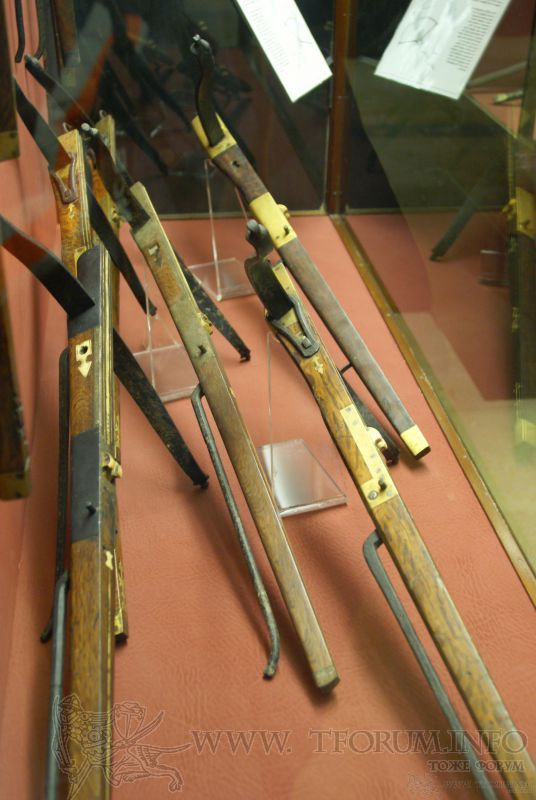Here are a couple of photos of historical examples of this kind of crossbow. I believe that this is in a museum in Malta, but my Russian is rusty, and I have to check into that.
You can see a variety of differences in the shapes of the lock plates and the plating at the "muzzle" end of the bows. And some are iron / steel, while others are bronze or brass. I opted for the simplest designs, but will spiff up the weapon with some inlayed bling on the top of the tiller aft of the lock, perhaps crosses?

The crossbow closest to your view at the lower left of this photo shows the plainer rectangular lock plate, and this one is definately steel. I can't say if the metalwork was originally in the white, or if it was colored or treated in some way. I am not sure what will look best, but no rush on this step.

The middle weapon is the one I am using as a model for the front plating. Notice that one some of these crossbows, the plating travels all the way to the end of the bow, and while it looks great, for this first one in this style, less metal is a good thing from my perspective. Also, you probably have noticed (or will now lol ) that some of the lock plates are a kind of L shape. I can't begin to say why there are different styles, perhaps just builder's preference? You can also see in all of these weapons the lug aft of the rolling nut that was used in conjunction with a cranquin or perahps goat's foot lever to span / draw the bow. For military bows that probably drew 300 or more pounds, you would absolutely need mechanical aid to draw them. For a dinky little 165 pound bow, a belt hook system would be fine, though I do plan to build a spanning device for this. That is way down the list of steps, so more on that when I get to it.
What is a cranquin, you say? Here is a shot I took of a splended example of a craquin in the Higgins Armory, in Worcester, MA. This is a German device, and while there is another style that slips my mind, these things are mechanical wonders, with a series of gears inside the gear box. The arm with the claw draws the bowstring up as you crank on it furously while men die and things are smashed and other war stuff is happening. I imagine you can also make a pretty decent bludgening weapon out of both the crossbow and the cranquin, should you run out of ammo.

Dane